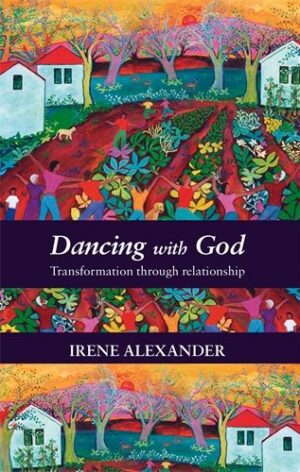



The introduction and the title introduce the image of dancing with God. Take time to notice your response, whether negative or positive, or ambivalent. Just pause and notice what happens as you simply stay with those words, that image. Let it help you see how you understand God to be, and how you understand your relationship with God to be.
Does your image of God, your relationship with God include the possibility of dancing? Again take the time to imagine this. What kind of dance would you feel comfortable with, or uncomfortable with? Do you have any memories of dancing as a child? What would it be like to dance like that with God?
The poem quoted in the introduction suggests every child has known God, especially the God who invites us to dance. Take some time to remember who God was to you when you were a child. Did you even have a sense of God? Perhaps you didn’t know the word God, but looking back you can recognise a knowing of God by another name. Many books have a character who is a “God-image.” Aslan in the Narnia books is a very obvious example, but others are more subtle – the great great grandmother in George MacDonald’s books, or the Idiot in Dostoyevsky. Or you may have had a sense of God in creation. You may have had one image of God for church, and another for your secret inner life. As you remember notice the feelings that accompany these images.
Research suggests that many/most children have an encounter with God. But that our society teaches us to shut these down, to disregard them, not to speak of them. Did you have an experience of God, inklings of God, or nudgings that you may never have spoken of? What is it like to remember these now? What would it be like to sit with the child you were and let her/him speak of what they knew or experienced of God. Can you speak words of encouragement to the child to help him/her explore their knowing. If you are part of a group can you share with each other something of this experience, being careful to honour the child’s knowing, trusting that indeed God speaks to children, even as Jesus welcomed them to come to him.
Jesus uses the metaphor of yoked oxen to invite us to walk with him in harmony and to learn from him. The image of a dance instructor helping us feel the rhythm of the dance by physical contact is another metaphor. What is your response to these images? Do you have an image of your own that invites you to intimate relationship with Jesus that teaches you “the unforced rhythms of grace,” to use the words of The Message? Take time to remember examples of when you have felt as though you “in step” with Jesus, experiencing those rhythms of grace. Share an example with the group.
What happens for you as you read the words: “We make the same mistakes over and over,” or “having mastered one step, we forget the one we learned before?” Do you have examples of this in your own life? What happens to you when you feel as though you repeat the same mistake? How have you learned to extend grace to yourself? Have you been able to take on the words of Paul “There is now no condemnation” (Rom 8:1)? Can you articulate how you discern the difference between the condemnation of the enemy with the invitational conviction of the Holy Spirit. Take some time to look back over the last week or month and notice examples of condemnation or conviction. How might your response to mistakes become more like a dance with God?
To finish this exploration go back to the first paragraph of the introduction – the examples of the dance within creation. Come up with your own list of examples of dance in creation, or alternatively with how you see the character of God in creation as Romans 1:20 tells us – his invisible nature is made visible to us in the things that have been made. These may be examples of grace, or renewed life, of kindness or justice or forgiveness.